Film Name:蟻人2: 黃蜂女現身 / Ant-Man and the Wasp
2018 was a year of building momentum for the Marvel Cinematic Universe. Yet from a narrower perspective, this year’s “finale” truly embodies the concept of building up to a quiet release.
This is primarily because Ant-Man and the Wasp delivers an overall lighthearted and relaxed experience. Especially after the heavy-hitting Avengers: Infinity War, audiences universally found this film refreshingly gentle and humorous.
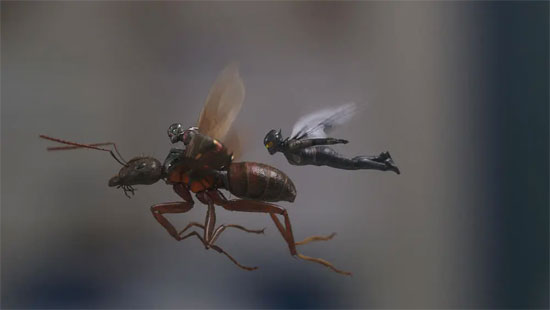
However, this “lightness” isn’t necessarily all positive. While Marvel aspires to create superhero films of diverse styles and genres, within an increasingly interconnected, formulaic, and burdened ecosystem, issues like audience fatigue and the difficulty of pleasing everyone have become increasingly prominent.
[Friendly reminder: Spoilers ahead.]
“Ant-Man and the Wasp” stands relatively independently within the MCU. Aside from its connection to the events of “Captain America: Civil War” and the post-credits scene in “Avengers: Endgame,” it largely functions as a self-contained story. This makes it easier for us to evaluate the film on its own merits.
First, let’s address the film’s biggest selling point—superpowers. Personally, I don’t think Ant-Man 2 breaks new ground or achieves groundbreaking innovation in this area. However, it does effectively expand upon existing concepts, delivering a solid performance without overreaching.
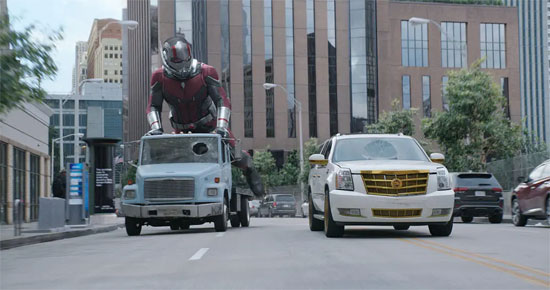
Relying on Pym particles to shrink and control ant colonies, these abilities naturally lose their wow factor by the second film. Consequently, this movie’s comedic moments stem more from Ant-Man’s giant form.
Although this reverse application appeared in “Captain America 3,” it was merely a fleeting glimpse during the airport battle before being hastily wrapped up, leaving much untapped potential. Thus, Scott, clad in his half-finished suit, constantly malfunctions—shrinking to child size, treating a pickup truck like a toy car, or transforming into a water giant to intercept a ship. These jokes, while not particularly novel, consistently deliver laughs.
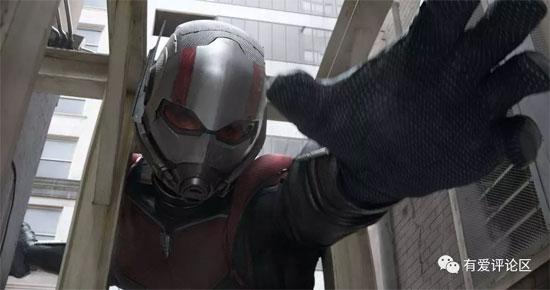
Particularly the detail where Scott gets “trapped” in giant form, allowing the normal-sized Bucky to escape, can be seen as pushing this gag to a “minor achievement.”
Beyond shrinking and enlarging people, Ant-Man 2 takes the “scalability” of objects to an extreme, mastering it to perfection and reaching the threshold where quality transforms into quantity.
The most iconic example is the suitcase-sized lab building—though hardly a “new technology,” it still delivers genuine amusement.
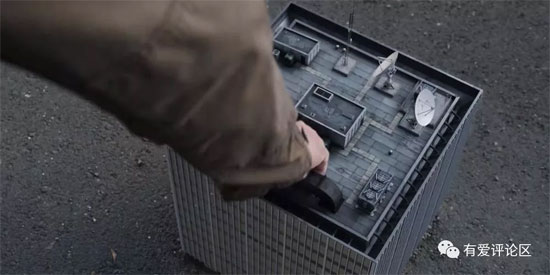
Simultaneously, the film seamlessly integrates this concept into action sequences like fight scenes and car chases. Giant salt shakers and candy boxes evoke memories of Dragon Ball’s capsule cars and “mobile garages,” significantly enhancing the film’s entertainment value.
While the action and special effects serve as delightful embellishments, the story and its core themes ultimately determine the quality of Ant-Man 2. Throughout the film, its foundational element is family bonds.
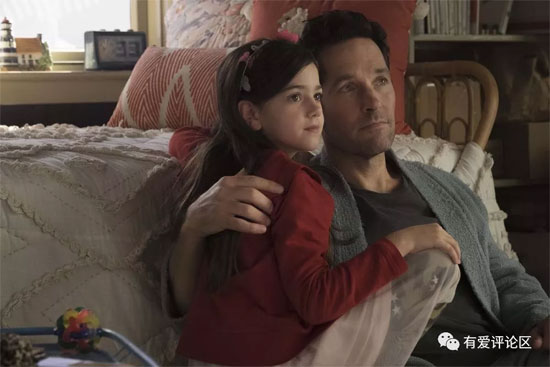
After his wild escapades in Captain America: Civil War, Scott Lang once again plays the reformed rogue, determined to comply with the law and serve his sentence. His greatest source of strength is his daughter, Cassie—to be with her, Scott has learned countless new skills, and she consistently provides him with the courage and resilience he needs at the most crucial moments.
Meanwhile, Hank Pym and his family—the very ones who nearly ruined Scott’s reputation—scramble tirelessly to rescue Janet from the quantum realm.
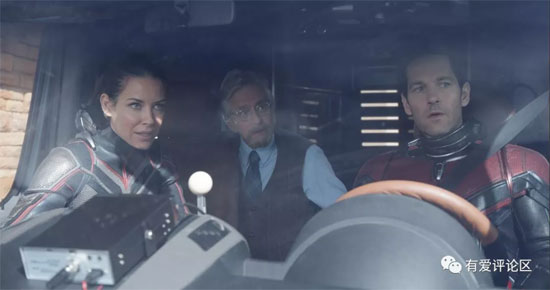
“Ant-Man and the Wasp” centers on Hank’s quest to rescue his wife and Hope’s mission to save her mother, woven together with Scott and Cassie’s father-daughter bond. Even Bill Foster’s relationship with Ghost carries a mentor-father dynamic, never abandoning her. It’s safe to say the film plays the family card to the fullest.
By contrast, Scott and Hope’s romantic subplot feels awkward. After all, the first “Ant-Man” was marketed as a “romantic comedy,” yet the sequel plunges straight into the dull routine of a long-married couple, lacking the spark of its predecessor…
Fortunately, the film downplays this romantic aspect, instead emphasizing their dynamic as “female hero” and “dynamic duo,” ensuring the main focus remains clear.
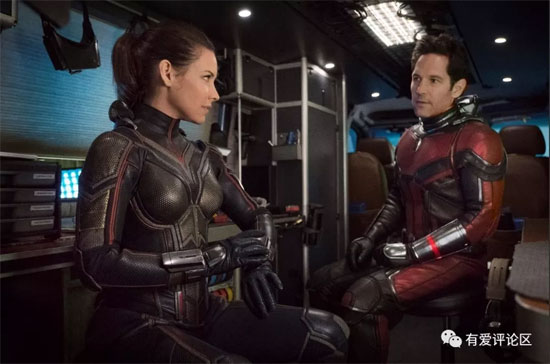
The theme of “family bonds” is inherently weighty, often carrying significant emotional gravity in film and television. Marvel films like Thor, Guardians of the Galaxy Vol. 2, Captain America: Civil War, and Black Panther have all explored familial ties, yet Ant-Man and the Wasp feels the most lighthearted… almost devoid of tension.
The reasons lie not only in the film’s design—prioritizing objectives over philosophical debate (the challenge being to safely find Janet without added ethical complications)—but also in the weakness of its villains.
Do you think the antagonists who trouble the protagonists in Ant-Man 2 have a strong presence (regardless of their comic book origins)?
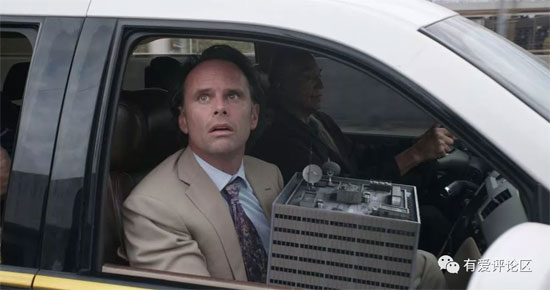
Right, she doesn’t even qualify as a “villain”—at best, she’s just “causing the protagonists some trouble.”
Sonny Birch consistently provided equipment support to Hope and her daughter. Only near the end of their collaboration did he switch sides at someone else’s request. What a waste of Wald Gogins’ menacing face—he gets beaten down throughout the film, completely powerless to fight back. I almost felt sorry for him…
By design, “Phantom” clearly fits the villain archetype. Yet the film pours so much effort into her powers and “tragic backstory” that there’s no room left to make her truly hateful. This leaves audiences feeling little resistance or emotional impact toward her actions.
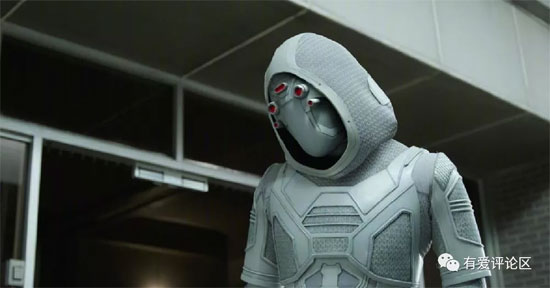
So even when she genuinely threatens Janet’s life, it barely creates any sense of urgency.
As for Agent Wu, it’s clear they intended him as a “troublemaker,” but his ultimate role was reduced to playing straight man…
“Ant-Man 2” is fundamentally a light action-comedy, and while it has plenty of “lightness,” the actual execution feels somewhat “floaty,” making it less gripping than it could be.
When it comes to the film’s biggest highlight, I still think it’s the wisecracking Louis.
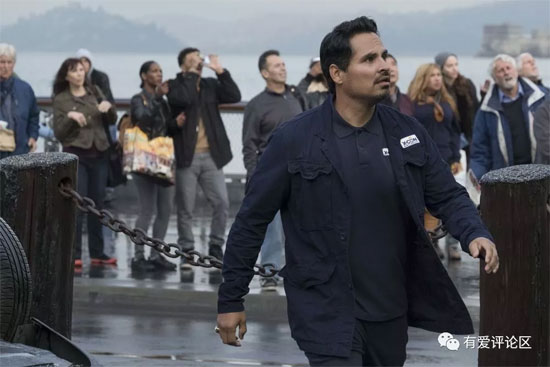
In the first “Ant-Man,” Louis delivered the biggest surprise, and in this film, he continues to embody the character’s American humor and chatty nature. Even in other comedies, such (relatively high-quality) witty dialogue is rare, and in the Marvel Cinematic Universe, it’s truly one-of-a-kind.
Of course, more people are now focused on how Ant-Man 2 connects to the MCU’s “main storyline.”
From this perspective, the Quantum Realm functions as a multiverse across different dimensions, theoretically capable of achieving the extraordinary effects of “time travel and turning the world upside down.” The first post-credits scene then ties the plot into Avengers: Infinity War and Avengers: Endgame—effectively completing its “mission.”
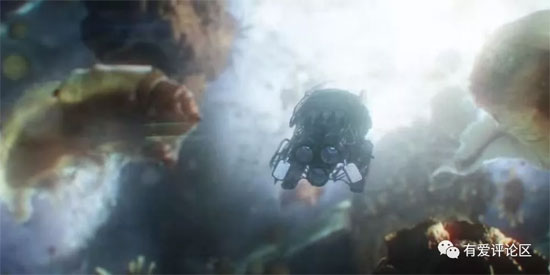
But… as more people focus on Easter eggs, crossovers with other films, and similar elements—while gradually neglecting the quality of the films themselves (also due to movies becoming increasingly formulaic)—this “circle” risks becoming a self-indulgent clique.
What once defined Marvel’s greatest strengths and advantages now increasingly burdens its expansion into new territories.
Please specify:Anime Phone Cases » Ant-Man and the Wasp 蟻人2: 黃蜂女現身 2018 Film Review: “Light” in every sense